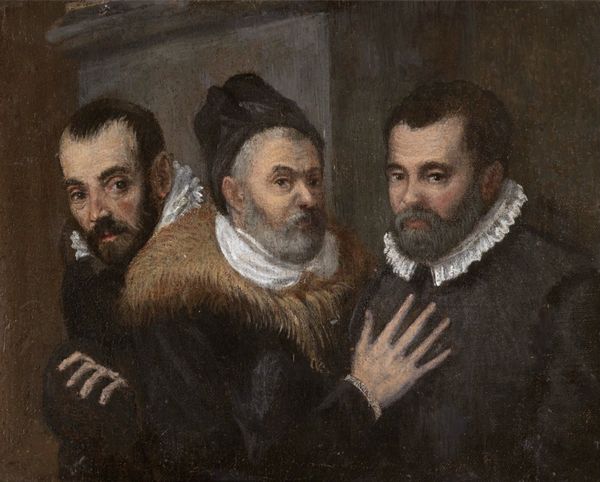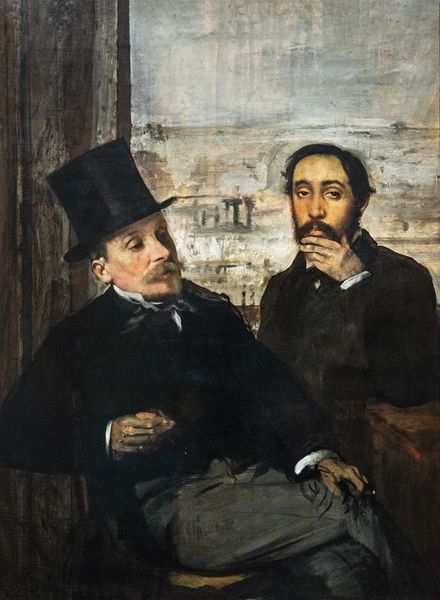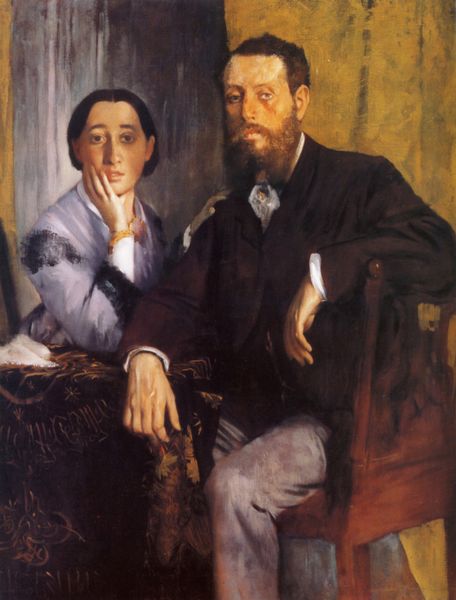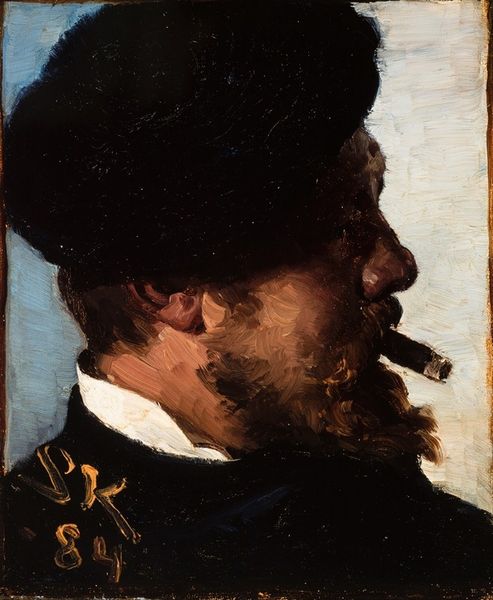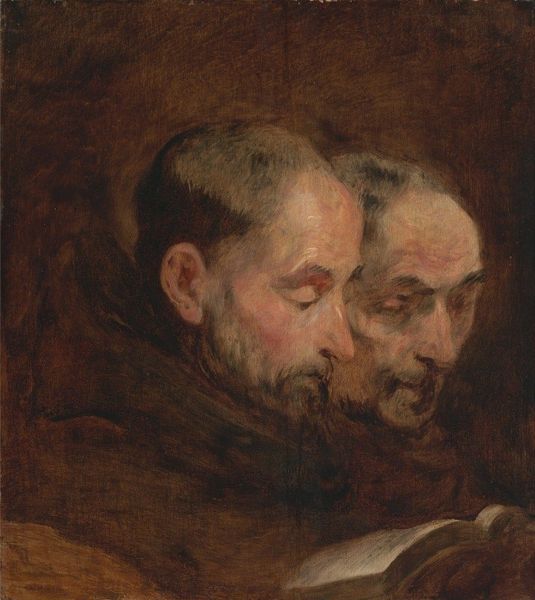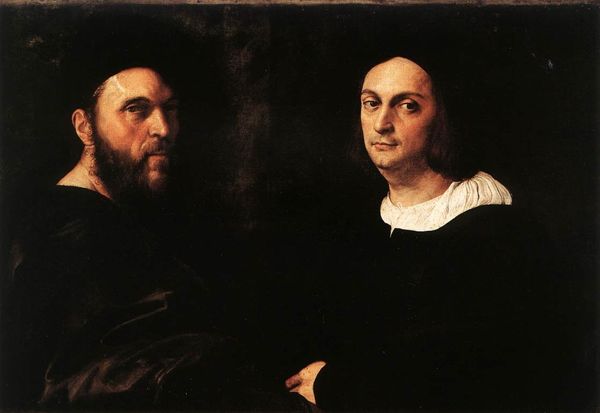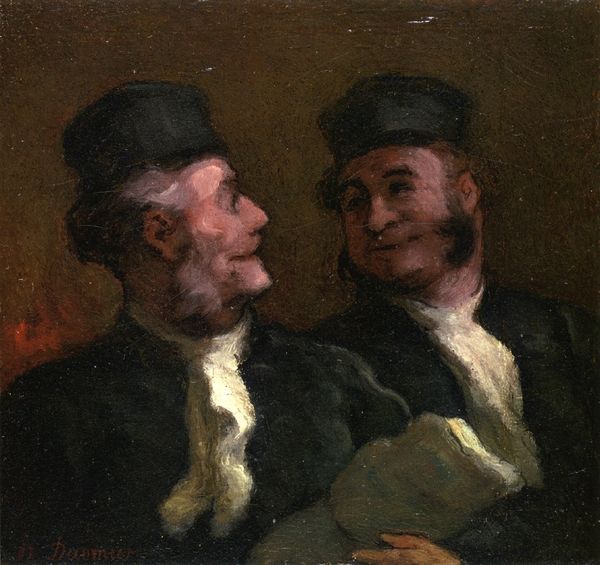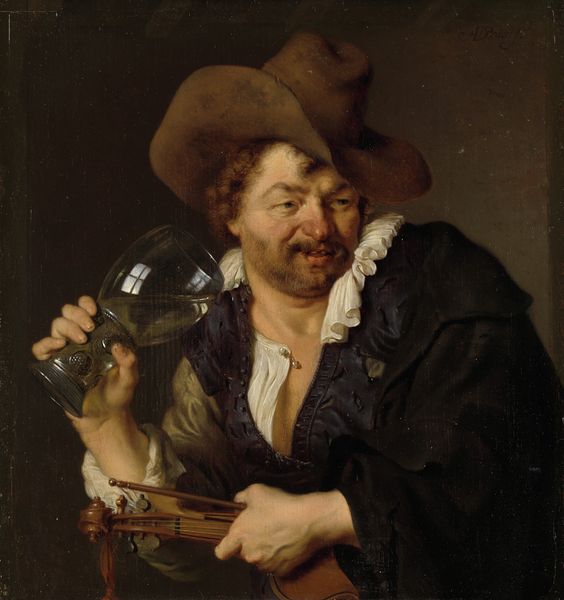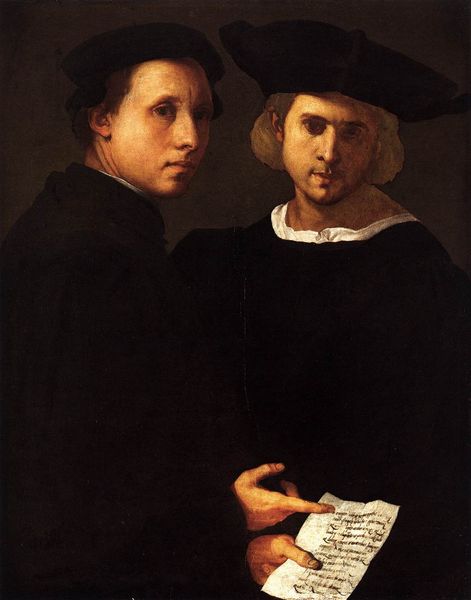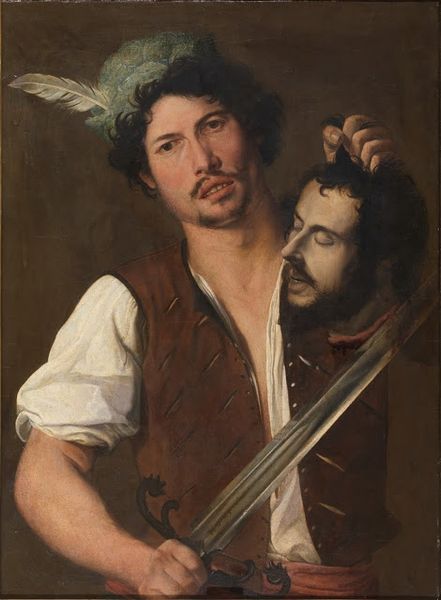
oil-paint
#
portrait
#
character portrait
#
portrait image
#
oil-paint
#
portrait subject
#
mannerism
#
figuration
#
portrait reference
#
portrait head and shoulder
#
genre-painting
#
facial portrait
#
portrait art
#
portrait character photography
#
fine art portrait
#
celebrity portrait
Dimensions: 73 x 59 cm
Copyright: Public domain
Curator: Bartolomeo Passerotti's "Double Portrait of Musicians," completed in 1579 using oil paint, presents a compelling study in contrasts and character. Editor: My immediate response is one of somberness; the dark palette and the men’s serious gazes give the artwork a very weighted feel. The near-black backdrop only enhances that sensation. Curator: Observe the way Passerotti balances the composition. The two figures are arranged almost as a diptych within the single frame. Note too the meticulous detail in their ruffs and beards, playing off the otherwise subdued tones. Editor: Yes, the stark ruffs and detailing really highlight the labour behind the clothing of the upper classes in the 16th century. These elements emphasize status, achieved through skilled artisanal crafting and production. Consider too the material presence of those instruments they're holding; what specific shops might have furnished them? What was the labour process for crafting the instruments they're handling? Curator: Focusing on form, I find the gazes especially potent. The younger man looks directly out at the viewer, establishing an immediate connection. Meanwhile, the elder musician seems to be regarding something beyond the frame, inviting speculation. It is a semiotic puzzle about social identity! Editor: Exactly! That shared musicality speaks volumes, even if one musician addresses us directly and the other averts his eyes. These pieces must have been costly, requiring significant wealth, indicating an active patronage for the artisanal instrument industry. What stories about manufacture, craftmanship, and commerce lie concealed? Curator: Moreover, think of Passerotti’s decision to portray them in this dual format. Is it simply a record of likeness, or is there a deeper narrative at play, suggesting mentorship or kinship? The mannerist flair amplifies this mysteriousness. Editor: It underscores how art, music and even skilled crafts in garments all involved a highly-trained labor force. Who were the hands shaping those instruments and ruffs, facilitating this performance? A lineage of artisanship binds the artwork’s social fabric, transcending merely its aesthetic impact. Curator: I am struck by how much this piece relies on line and tonal modelling to achieve its effects. Editor: This exercise really makes you consider the complex dynamics between artisanal labor, wealth, status, and aesthetic value of even historical art. Curator: Indeed. Art transcends mere image; it encapsulates so much historical context within form.
Comments
No comments
Be the first to comment and join the conversation on the ultimate creative platform.

